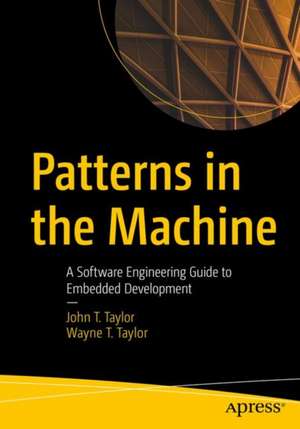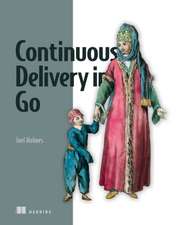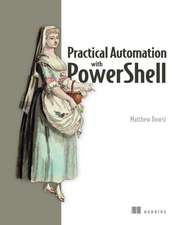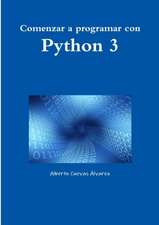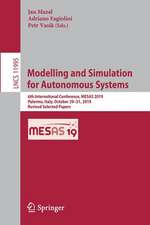Patterns in the Machine: A Software Engineering Guide to Embedded Development
Autor John T. Taylor, Wayne T. Tayloren Limba Engleză Paperback – 20 ian 2021
This book illustrates how implementing continuous integration, automated unit testing, platform-independent code, and other best practices that are not typically implemented in the embedded systems world is not just feasible but also practical for today’s embedded projects.
After reading this book, you will have a better idea of how to structure your embedded software projects. You will recognize that while writing unit tests, creating simulators, and implementing continuous integration requires time and effort up front, you will be amply rewarded at the end of the project in terms of quality, adaptability, and maintainability of your code.
What You Will Learn
- Incorporate automated unit testing into an embedded project
- Design and build functional simulators for an embedded project
- Write production-quality software when hardware is not available
- Use the Data Model architectural pattern to create a highly decoupled design and implementation
- Understand the importance of defining the software architecture before implementation starts and how to do it
- Discover why documentation is essential for an embedded project
- Use finite state machines in embedded projects
Mid-level or higher embedded systems (firmware) developers, technical leads, software architects, and development managers.
Preț: 273.32 lei
Preț vechi: 341.65 lei
-20% Nou
Puncte Express: 410
Preț estimativ în valută:
52.31€ • 56.80$ • 43.94£
52.31€ • 56.80$ • 43.94£
Carte disponibilă
Livrare economică 02-16 aprilie
Livrare express 18-22 martie pentru 34.68 lei
Preluare comenzi: 021 569.72.76
Specificații
ISBN-13: 9781484264393
ISBN-10: 1484264398
Pagini: 293
Ilustrații: XIX, 293 p. 59 illus.
Dimensiuni: 178 x 254 x 22 mm
Greutate: 0.55 kg
Ediția:1st ed.
Editura: Apress
Colecția Apress
Locul publicării:Berkeley, CA, United States
ISBN-10: 1484264398
Pagini: 293
Ilustrații: XIX, 293 p. 59 illus.
Dimensiuni: 178 x 254 x 22 mm
Greutate: 0.55 kg
Ediția:1st ed.
Editura: Apress
Colecția Apress
Locul publicării:Berkeley, CA, United States
Cuprins
1: Introduction.- 2: Core Concepts.- 3: Design Theory For Embedded Programming.- 4: Persistent Storage Example.- 5: Software Architecture.- 6: Automated Unit Testing.- 7: Functional Simulator.- 8: Continuous Integration.- 9: Data Model.- 10: Finite State Machines.- 11: Documentation.- 12: File Organization and Naming.- 13: More About Late Bindings.- 14: Initialization and Main.- 15: More Best Practices.- 16: PIM Thermostat Example.- 17: The Tao of Development.- Appendix A: Terminology.- Appendix B: UML Notation for State Machines.- Appendix C: UML Cheat Sheet.- Appendix D: Why C++.- Appendix E: Package Management and Outcast.- Appendix F: Requirements vs. Design Statements.
Notă biografică
John Taylor has been an embedded developer for over 29 years. He has worked as a firmware engineer, technical lead, system engineer, software architect, and software development manager for companies such as Ingersoll Rand, Carrier, Allen-Bradley, Hitachi Telecom, Emerson, and several start-up companies. He has developed firmware for products that include HVAC control systems, telecom SONET nodes, IoT devices, micro code for communication chips, and medical devices. He is the co-author of five US patents and holds a bachelor’s degree in mathematics and computer science.
Wayne Taylor has been a technical writer for 25 years. He has worked with companies such as IBM, Novell, Compaq, HP, EMC, SanDisk, and Western Digital. He has documented compilers, LAN driver development, storage system deployment and maintenance, and dozens of low-level and system-management APIs. He also has ten years of experience as a software development manager. He is the co-author of two US patents and holds master’s degrees in English and human factors. He is a co-author of OS/2 and NetWare Programming (Van Nostrand Reinhold, 1995).
Textul de pe ultima copertă
Discover how to apply software engineering patterns to develop more robust firmware faster than traditional embedded development approaches. In the authors’ experience, traditional embedded software projects tend towards monolithic applications that are optimized for their target hardware platforms. This leads to software that is fragile in terms of extensibility and difficult to test without fully integrated software and hardware. Patterns in the Machine focuses on creating loosely coupled implementations that embrace both change and testability.
This book illustrates how implementing continuous integration, automated unit testing, platform-independent code, and other best practices that are not typically implemented in the embedded systems world is not just feasible but also practical for today’s embedded projects.
After reading this book, you will have a better idea of how to structure your embedded software projects. You will recognize that while writing unit tests, creating simulators, and implementing continuous integration requires time and effort up front, you will be amply rewarded at the end of the project in terms of quality, adaptability, and maintainability of your code.
You will:
This book illustrates how implementing continuous integration, automated unit testing, platform-independent code, and other best practices that are not typically implemented in the embedded systems world is not just feasible but also practical for today’s embedded projects.
After reading this book, you will have a better idea of how to structure your embedded software projects. You will recognize that while writing unit tests, creating simulators, and implementing continuous integration requires time and effort up front, you will be amply rewarded at the end of the project in terms of quality, adaptability, and maintainability of your code.
You will:
- Incorporate automated unit testing into an embedded project
- Design and build functional simulators for an embedded project
- Write production-quality software when hardware is not available
- Use the Data Model architectural pattern to create a highly decoupled design and implementation Understand the importance of defining the software architecture before implementation starts and how to do it
- Discover why documentation is essential for an embedded project
- Use finite state machines in embedded projects
Caracteristici
Covers patterns for firmware and embedded software Covers embedded software development without the hardware Shows how to effectively use continuous integration and automated unit testing
